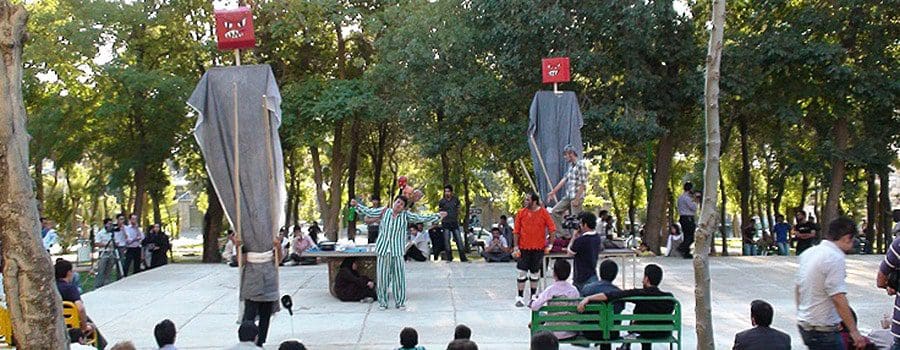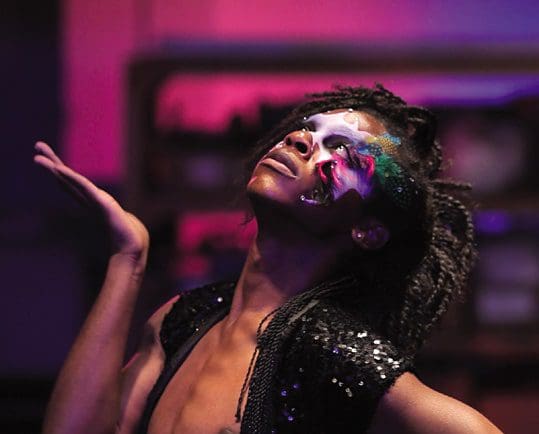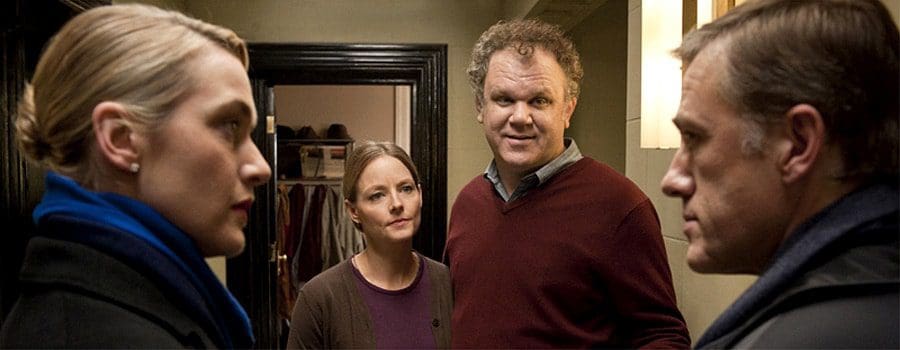words Christina Brennan
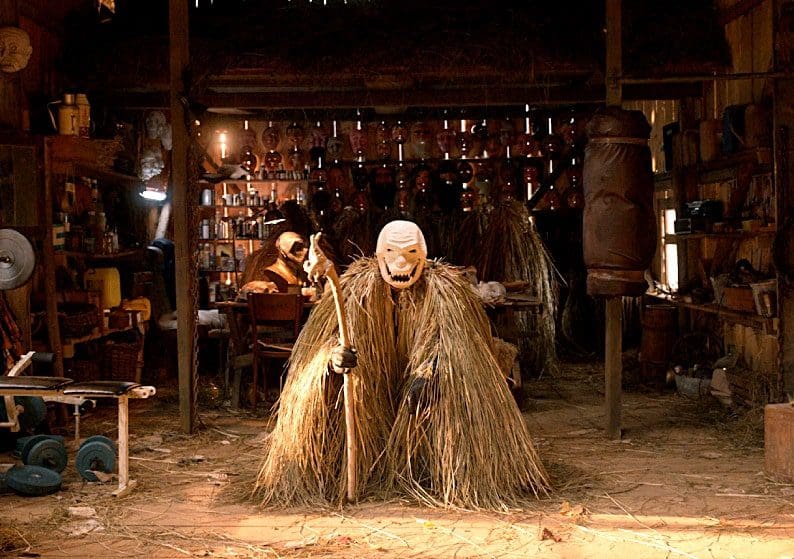
Pamfir, the Ukrainian crime thriller from debut director Dmytro Sukholytkyy-Sobchuk has been generating international attention since premiering at last year’s Cannes Film Festival. Screen went so far as to praise it as a “stop-in-your-tracks debut”, while Cineuropa‘s Nataliia Serebriakova called the film an “original Ukrainian movie, unlike anything we’ve seen before from the country.” One thing is for certain: Pamfir will get into your head and rattle your nerves.
Oleksandr Yatsentyuk stars as Leonid, nicknamed ‘Pamfir’ or ‘Stone,’ a world-weary criminal and contraband smuggler with a matter-of-fact approach to his dirty trade. After a period working legally in Poland, he returns home to the border region of Chernivtsi, a forest area of the Carpathian Mountains on the Ukrainian-Romanian border. Leonid has a taste for everyday civilian life and is prepared to climb his way out of the criminal underworld that has a grip on his village. He returns home amidst village preparations for the ‘Malanka’ festival – a costume-filled Ukrainian folk holiday combining Christian and pagan traditions. Solomiya Kyrylova is Leonid’s tough-as-nails wife, Olena, determined to stop the town’s mafia-style criminal underworld from sucking in adolescent son Nazar (Stanislav Potyak). Despite their efforts, the local crime boss draws the family into an unravelling nightmare that sabotages Leonid’s ambitions and threatens the family’s future.
Flux magazine caught up with Sukholytkyy-Sobchuk to discuss Pamfir, making independent films, and the future of the Ukrainian film industry during the Russia-Ukraine War.
Can you tell me about the origins of Pamfir? Where did the story and the idea of the film come from?
The origins of Pamfir lie in my early work. The idea for the film first came from my student years, including my graduation film, Krasna Malanka, which heavily featured the Malanka carnival that is the backdrop for Pamfir. I later made a documentary film, Intersection, in co-production with Romania. Both films were shot in the border area between Ukraine and Romania, so I generated a lot of ideas for material for Pamfir from this early work. After film school, I wanted to make a feature movie, and I had a vague, general idea for a story about a man who wanted a better life for his family and yet was wrestling with his conscience about the means to do this during a pivotal point in Ukraine’s national life and history. I envisaged Pamfir as a reflection of life in Ukraine, and the opportunities of Ukrainian emigration, from 2008 until around 2017 [when the European Union approved visa-free travel from Ukraine]. However, since the Russian invasion in 2022, life in Ukraine has dramatically changed. The life of the characters in Pamfir has changed. I set out to make a film about contemporary Ukraine, but Pamfir became, unintentionally, a historical movie about life and outlook that has vanished for many Ukrainians.
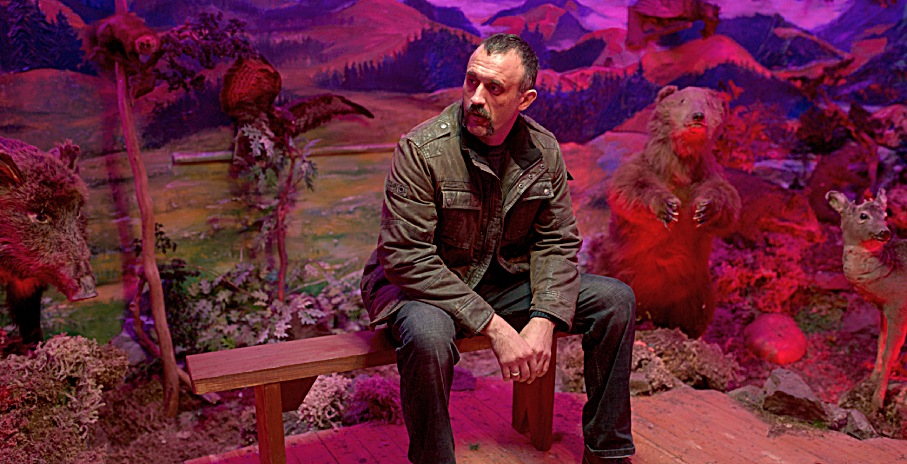
Pamfir is an incredibly vivid depiction of life on the Ukrainian-Romanian border. Can you tell me about the symbolism and importance of this location to the film?
The imagery of the border as the heart of Pamfir. Here is a man who is used to breaking and manipulating ethical norms or laws to provide his family with a stable life and future. The border represents the law and norms. In Pamfir, the border represents the symbolic break between the East and the West, between Ukraine and the European community, and the democratic world the country wants to be part of. Since the fall of the Soviet Union, Ukraine has increasingly wanted to be part of this community and distances itself from imperial Soviet influence. So the border has important symbolism in the story, but it’s also a broader political and national question that underpins the film.
Pamfir is a film that moves across different genres. It starts as a family or domestic drama but becomes a nightmarish crime thriller. Did you plan to make this kind of film?
I play with genres as a director, and I like to play with the viewers’ expectations. Audiences often expect certain conventions and rules to identify the type of film their watching on screen. I try to undermine and defy expectations and enhance tension. The story and the plot are relatively simple. But the film is richer once you look at and follow the relationships between the family and different layers of society, including the Christian life of the community, the law-abiding part of the community, and the criminal world. The plot is the tip of the iceberg in Pamfir. It’s the relationships that are important to every layer of the film. Pamfir is about Leonid’s relationship with his wife and son, his parents, and his conflict with them, especially his father. The relationships unfold and evolve in each scene, and each sequence reveals new tensions and the backstory behind family conflict and rivalry. Characters exist in a dual world, and all characters reflect the duality of the real world. Leonid, the central character, is a good family man and a smuggler at the same time. All characters have good and bad within them.
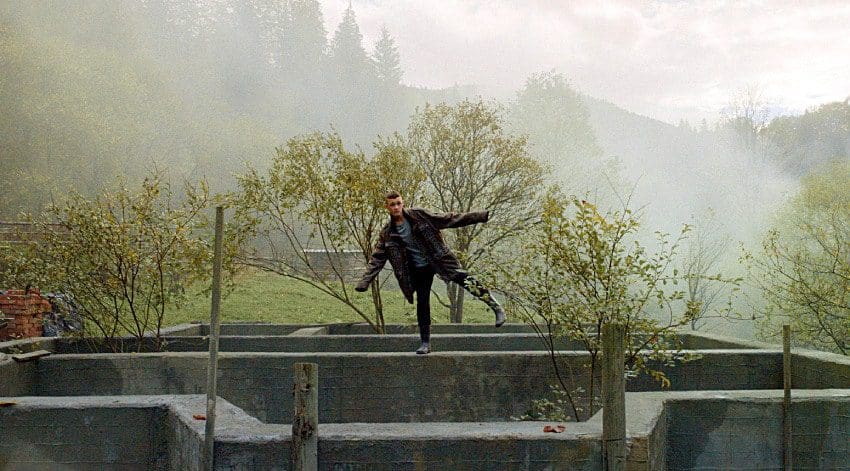
The film also focuses on religious life in Ukraine and depicts the differences between Christianity and national folk traditions. What is the importance of the Malanka festival and religion to Pamfir?
Malanka is a traditional Ukrainian holiday that is called a carnival or bacchanalia. It’s a long-standing holiday and is part of regular life in Ukraine. The question of faith and religion is also linked to the theme of duality that I mentioned earlier. When I was making my documentary, Krasna Malanka, I wanted to reflect on the kaleidoscope of my experiences in a feature film. Malanka has become a catalyst in the film that draws out many subtle elements of village and community life. In Ukraine, pagan history, cultural traditions, and Christian faith fit together; different regions have different connections with pagan culture. These Christian and pagan elements come together in Ukrainian community life. This combination represents different strands of Ukrainian culture, and this dualism profoundly impacts the Ukrainian people and their understanding of themselves.
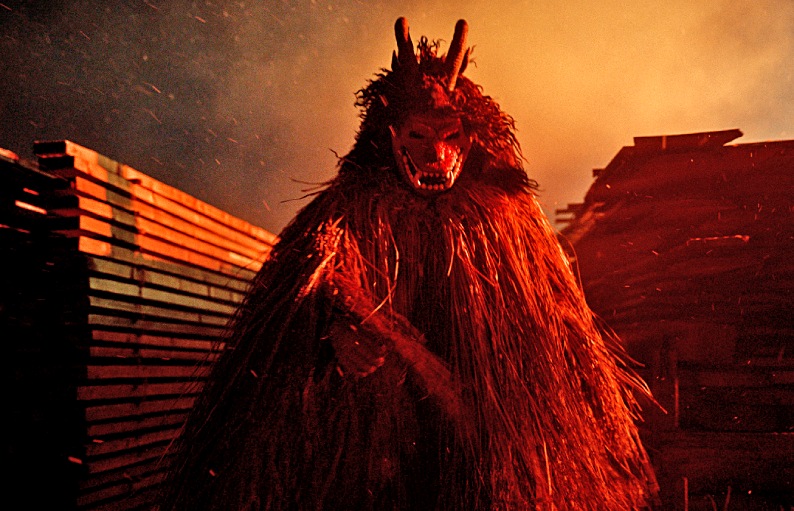
What do you think is the future of Ukraine’s film industry, especially during the war and fight against Russia?
Partnerships with different countries will be essential to supporting independent movies and film culture in Ukraine. Pamfir was released with international support from organisations including the Ukrainian State Film Agency, Aide Aux Cinémas Du Monde, Polish Film Institute, Visions Sud Est, Hubert Bals Fund+Europe, Göteborg Film Fund, Ukrainian Cultural Foundation, and Chernivtsi Regional State Administration. Support like this is vital for Ukrainian film and should include documentaries about how war is changing the country. It’s necessary to tell the stories of Ukraine in different ways. We have talented filmmakers in Ukraine, and it’ll be essential for them to tell our story and explain the origins of the invasion and the history of imperial thinking within the Russian Federation. Ukraine is fighting decades-long propaganda from the Russian Federation, which considers Ukraine its colony. Fighting this propaganda isn’t just about Ukraine – it’s about defying imperialism everywhere. Ukrainians are attempting to dispel all the myths that the Soviet Union generated, which still live today and have been imposed by the Russian Federation.
PAMFIR is in UK / Irish cinemas 5 May https://www.conic.film/films/pamfir















